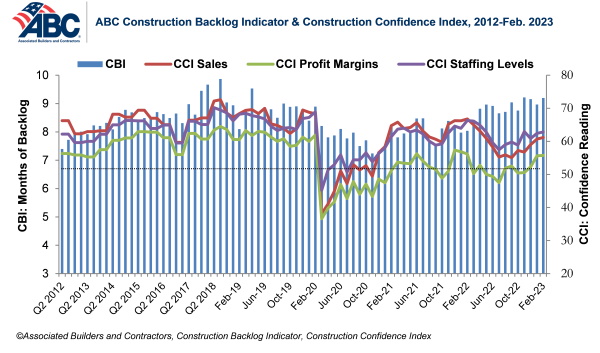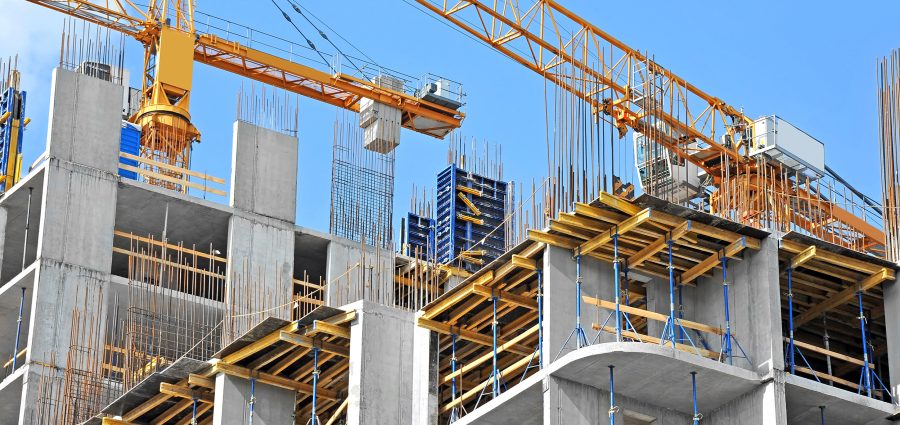Associated Builders and Contractors (ABC) shared the results of its latest Construction Backlog Indicator on March 6, showing that average backlog increased to 9.2 months in February from nine months in January.
The reading is up 1.2 months from February 2022.
Backlog remains high; for the past four months, the indicator has hovered around highs not seen since the beginning of the COVID-19 pandemic, according to ABC. The Southern region continues to experience the highest backlog of any region, posting at least 11 months of backlog in four of the past five months.
Backlog in the commercial and institutional segment increased slightly from 9.2 to 9.4 in February. Meanwhile, backlog in the heavy industrial segment jumped from 8.4 to 10.4, and backlog in the infrastructure segment increased from 8.6 to 10.
ABC’s Construction Confidence Index readings for sales, profit margins and staffing levels all remained above the threshold of 50, indicating expectations for growth over the next six months.
“Despite a gloomy economic forecast and extraordinarily elevated borrowing costs, contractor backlog and confidence continue to rise,” ABC Chief Economist Anirban Basu said in a news release. “This mirrors the broader economy, which has thus far proved resilient in the face of rising interest rates. While economic strength, particularly regarding labor demand, is surprising, interest rate increases typically take 12 to 18 months to affect the broader economy, and the first interest rate increase occurred in March 2022.
“While backlog remains at a historically elevated level, borrowing costs will continue to rise during the next several months, and contractors continue to struggle in the face of skilled labor shortages. If economic momentum fades this year, as a majority of forecasters continue to predict, then backlog and confidence may decline, especially for contractors working predominantly on privately financed projects.”

Related Posts
-
Backlog is once again above the level observed at the start of the pandemic, according…
-
Despite the decline in January, backlog remains elevated by historical standards and is 0.1 months…
-
After surpassing its pre-pandemic level in September, backlog is now back below the reading observed…





